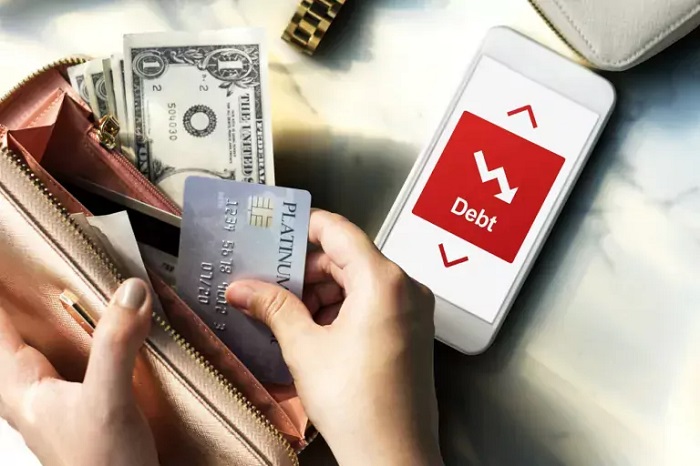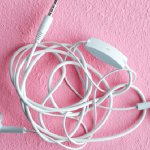If you use credit cards for their convenience, rewards, and protections and pay off your balance in full each month, you’re getting the best of your cards without paying the card issuers a penny. But if you regularly carry balances and rack up high-interest charges, you’re letting your cards get the best of you!
Consider the following seven strategies for reducing or eliminating expensive card balances as soon as possible.
Stop Making New Card Charges
If you routinely carry card balances from month to month, it’s essential to understand what it costs you. As interest accrues, it can double or triple the original cost of a charged item, depending on your card’s rate and how long you take to pay it off. The average rate for cardholders with good credit is in the mid-twenties!
The first step to improving your financial life is acknowledging your situation and money mistakes. Regularly financing a lifestyle you can’t afford on credit cards is a big trap because they get more challenging to pay off the longer you keep adding purchases plus monthly interest.
So, stop making new charges until you take control of your cards and can pay off new charges each month. Yes, reining in card spending will probably require sacrifices that won’t be easy–nothing worthwhile in life ever is.
You might consider ways to earn extra income, like starting a side gig, finding a better-paying job, asking for a raise, getting a second or seasonal job, or selling unused stuff. Also, look for ways to radically cut costs by downsizing your largest expenses, like housing and transportation. Of course, you should also cut smaller or unnecessary costs, like memberships, subscriptions, and entertainment, to free up more funds to pay off debt.
The spending cuts you make to eliminate debt don’t have to last forever. Challenge yourself to stop all unnecessary expenses for at least a few months and shop your recurring bills, like auto insurance, wireless plans, and cable TV, for better deals that save money.
Consider your Big Financial Picture
When you get serious about paying off credit cards, I recommend reviewing the “big picture” of your financial life. For instance, do you have other dangerous debts or obligations you should prioritize, like a tax delinquency, legal judgment, unpaid child support, or past due account with a collection agency?
Assuming you don’t have debts in default, please pay attention to the importance of building a healthy emergency fund while tackling credit card debt. Not having a cash reserve could be a reason you got into card debt in the first place.
I recommend maintaining a minimum of three to six months’ worth of your living expenses in an FDIC-insured high-interest savings account. You should build it slowly while chipping away at top-priority debts.
Pay More than a Card’s Minimum
Many people who can pay more than their monthly card minimums don’t do it. The problem is that minimums go primarily toward interest and don’t reduce your balance significantly.
For example, if your card charges a competitive 15% APR, you have a $5,000 balance, your minimum payment is 4% of the balance, and you never use the card again, it will take you 10.5 years to pay off. And here’s the worst part–you’d have paid almost $2,400 in interest!
That’s a conservative example because, as I mentioned, many people are paying rates in the mid to upper twenties.
Tackle Debts from Highest to Lowest Interest Rate
To create a debt payoff plan, list all your debts, including credit cards, lines of credit, mortgages, and loans. You might jot them down on paper, enter them in a Google sheet, or use my Personal Financial Statement (PFS) template, which is a free download when you subscribe to my weekly newsletter, The Money Stack.
Using my PFS will prompt you to include your balances, interest rates, and payoff dates for installment loans. Then, you’ll rank your debts from highest to lowest interest rate for a payoff priority.
Remember that the higher a debt’s interest rate, the more it costs you in interest per dollar of debt. So, getting rid of the highest-interest debts first saves you the most. Plus, you can use the savings to pay more on your next highest interest debt, allowing you to pay off credit card debt faster.
If you have several credit cards, rank them the same way–from highest to lowest interest rate. However, if a credit card isn’t the most expensive debt you have, or you have other dangerous debts, it should be lower on your priority list.
Generally, debts with tax deductions, such as mortgages, home equity lines of credit, and student loans, should be paid off last. Not only do they charge relatively low interest rates, but they cost even less on an after-tax basis, provided you claim a tax deduction for them.
3 Debt Payoff Methods
In addition to paying off debts from the highest to lowest interest rate, I want to mention other strategies. Here’s a summary of three debt payoff methods you might use.
Debt avalanche: You pay off debts from the highest to the lowest interest rate. For instance, you’d pay off an 18% credit card balance before a 5% student loan because it costs you more in interest. As I mentioned, I prefer this method because it’s the most cost-effective in the long run.
Debt snowball: You pay off debts in order of the smallest to largest balances, no matter their interest rates. For instance, if you have a $1,000 student loan balance at 5% and $2,500 on a credit card charging 18%, you’d wipe out the student loan first. The idea is that getting rid of a small debt quickly can motivate you to stay disciplined and eliminate more significant debts.
Debt landslide: You pay off debts in order of newest to oldest. This method can help you improve your credit while you reduce your debt. For instance, if you got a student loan after opening a credit card, you’d pay off the loan first. That boosts your credit because more weight is given to activity on newer accounts than older ones.
Raising your credit scores might be vital if you’re recovering from financial hardship or considering a big purchase like a home. However, whether you pay off an account or not, making timely payments is excellent for your credit health.
While I prefer a debt avalanche, there isn’t a right or wrong way to pay off debt. Any method you can stick with and make steady progress will be a good one. I’ve snowballed small debts because I just wanted to be done with them, and you can, too.
Use your Assets to Pay off Cards
If you have assets, such as savings and investments, that you can use to pay down high-interest credit cards, that may make sense. Remember that you still need a healthy cash reserve in the bank, such as several months’ worth of living expenses.
If you don’t have any or enough emergency money, don’t dip into your savings to pay off credit card debt. Also, consider what tangible assets you can sell, such as unused sporting goods, jewelry, or a vehicle, to raise cash and increase your financial cushion or decrease your credit card balance.
Consider a Balance Transfer Offer
If you can’t pay off credit card debt using existing assets, consider “optimizing” it by moving it from a higher to lower-interest option utilizing a balance transfer credit card. It temporarily reduces the interest you pay, giving you some financial breathing room.
You apply for a promotional offer, such as paying 0% interest for 12 months. Every transfer is subject to a fee, such as 3% or 4%, which gets added to your balance.
By transferring higher-interest debt to a zero-interest credit card, you avoid interest and save money to pay the balance faster. However, the amount you can transfer depends on the credit line the issuer offers you. If you don’t have good credit, you may not get approved for a balance transfer or only put a small amount of your debt on a transfer card.
Use a comparison site like Finder to shop for the best balance transfer cards with the lowest interest, transfer, and annual fees. Choose an offer where you come out ahead, even accounting for the transfer fee.
I recommend always paying off a balance transfer before the promotion expires. For instance, if you get approved to transfer $3,000 to a card charging 0% for 12 months, you should make monthly payments of at least 1/12 or $250, so it gets eliminated before your interest rate goes up.
Consolidate your High-Rate Balances
A common question I receive about credit cards is whether it’s wise to consolidate balances. Many people worry that consolidation is a scam or will hurt their credit.
Debt consolidation is a legitimate way to shift higher-interest debt to a lower-interest account. While it may seem counterintuitive to use new debt to get out of old debt, it all comes down to your interest rate.
Depending on the terms you get offered, consolidating can be an excellent way to reduce interest and get out of debt faster. No, it doesn’t reduce the debt you owe, but transferring or reorganizing it can reduce your interest rate and make it easier to pay off. Consider the following ways to consolidate credit card debt.
Personal loan: You take a fixed-rate loan to pay off higher-rate debt. You make monthly payments during a set repayment term, such as three or five years. The rate and terms a personal loan lender offers usually depend on factors like your income and credit.
Remember that even though a personal loan may cut your interest, the shorter your repayment schedule, the higher your monthly payments will be. You risk hurting your credit if you can’t repay a personal loan as agreed.
You can enter basic information at online lenders like PersonalLoans.com and Lightstream to see your loan options without hurting your credit. Those are good options when you have a larger balance to consolidate and want a structured repayment term.
For example, if you have a credit card balance charging 22%, paying it off with an 8% fixed-rate personal loan over three years allows you to save a lot of interest over a set repayment schedule.
In addition, having an additional loan added to your credit history helps you build credit if you make payments on time. Doing a consolidation also works in your favor by reducing your credit utilization ratio when you reduce your credit card debt. So, a loan consolidation generally helps your credit and doesn’t hurt it.
Home equity line of credit (HELOC) or loan: If you’re a homeowner with at least 20% equity, you may qualify for a (HELOC) or equity loan. For example, if your home’s market value is $400,000 and your outstanding mortgage balance is $300,000, you have $100,000 in equity or 25% ($100,000 / $400,000 = 0.25).
A HELOC is a revolving line of credit with a variable interest rate that allows you to borrow an amount up to your credit line, using your home as collateral, without needing to refinance your existing mortgage. A home equity loan gives you a lump sum to repay over a set term, such as five to thirty years, with a fixed interest rate.
Since a HELOC and equity loan are secured debt, they typically charge lower interest rates than a personal loan. You can use them however you wish, such as for home renovations or paying off higher-rate debt.
However, if you use a HELOC or equity loan to buy, build, or improve your home, a portion of the interest paid is tax-deductible—but that’s not the case for other uses like debt consolidation.
The main downside of tapping your home equity with a HELOC or loan is that if you default, you risk losing your home to foreclosure. Plus, there are closing costs, similar to a primary mortgage, which add to the cost of borrowing. Consider getting multiple quotes, including from your current mortgage lender.
Retirement plan loan: If you have a workplace retirement account or are self-employed with a solo 401(k), most plans allow you to take out loans with a five-year repayment term. Note that loans are never an option with any IRA.
While you must repay retirement loans with interest, it’s typically relatively low and goes back into your account. In addition, there’s no credit check, underwriting requirement, or fees since you’re borrowing your own money. You can borrow 50% of your vested balance or $50,000, whichever is less.
You can use a 401(k) loan for any reason, including paying off high-interest debt. But remember that borrowed funds won’t get invested in the market during repayment, which could jeopardize your retirement.
Another consideration is that a retirement loan must be repaid in full within 60 days if you leave your job or get terminated. If you don’t repay it on time, it gets considered an early withdrawal, subject to income taxes plus a 10% penalty if you’re younger than 59.5.
Whether you should take a loan from your workplace retirement plan depends on your financial circumstances and plan for using the funds. Laura explains in episode 770. Listen in the player below.
What Should you do after Paying off Credit Cards?
If you use these strategies to pay off one or more credit cards, you may wonder what to do with them. If maintaining good credit is one of your goals, keep paid-off cards instead of canceling them. To maintain or improve your credit, you must have credit accounts open in your name and use them regularly.
Making small purchases from time to time and paying them off in full and on time is enough to add positive data to your credit reports. You don’t need to carry a balance from month to month or pay interest on a credit card to build excellent credit.






GIPHY App Key not set. Please check settings